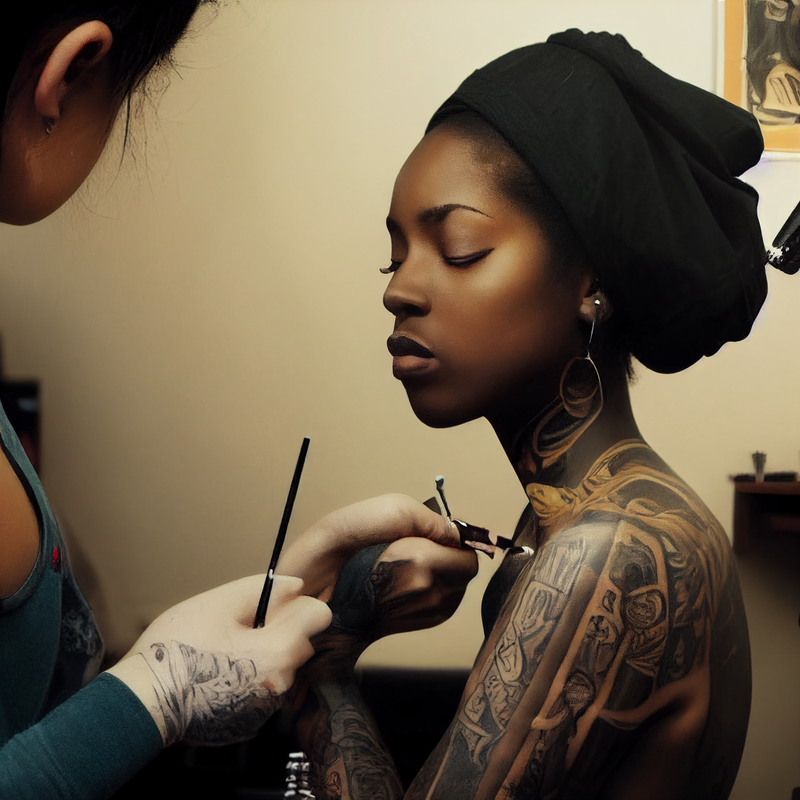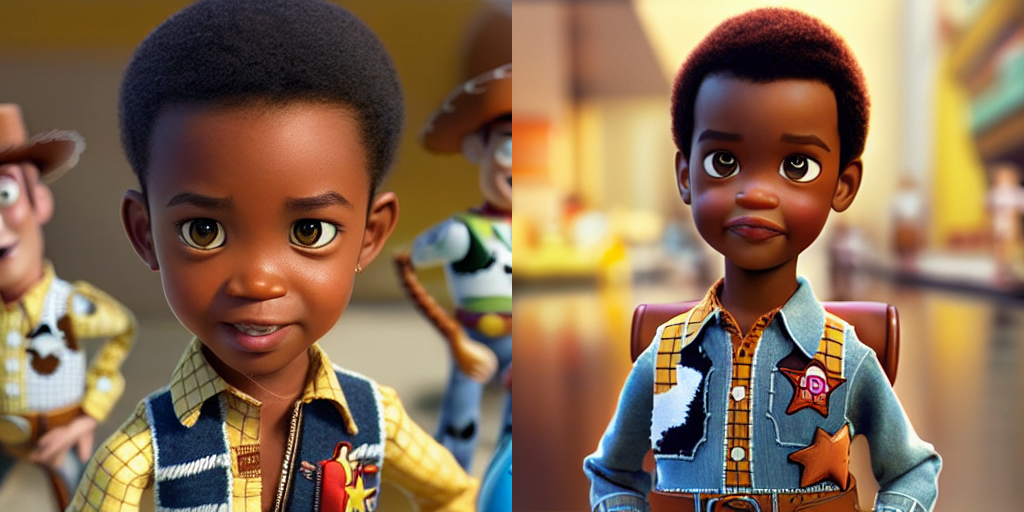
Black Artists Say A.I. Shows Bias, With Algorithms Erasing Their History
Tech companies acknowledge machine-learning algorithms can perpetuate discrimination and need improvement.
Black Artists Say A.I. Shows Bias, With Algorithms Erasing Their History
Tech companies acknowledge machine-learning algorithms can perpetuate discrimination and need improvement.

Stephanie Dinkins at work in her Brooklyn studio. For the past seven years, she has experimented with A.I.’s ability to realistically depict Black women smiling and crying. Credit...Flo Ngala for The New York Times
By Zachary Small
July 4, 2023
The artist Stephanie Dinkins has long been a pioneer in combining art and technology in her Brooklyn-based practice. In May she was awarded $100,000 by the Guggenheim Museum for her groundbreaking innovations, including an ongoing series of interviews with Bina48, a humanoid robot.
For the past seven years, she has experimented with A.I.’s ability to realistically depict Black women, smiling and crying, using a variety of word prompts. The first results were lackluster if not alarming: Her algorithm produced a pink-shaded humanoid shrouded by a black cloak.
“I expected something with a little more semblance of Black womanhood,” she said. And although the technology has improved since her first experiments, Dinkins found herself using runaround terms in the text prompts to help the A.I. image generators achieve her desired image, “to give the machine a chance to give me what I wanted.” But whether she uses the term “African American woman” or “Black woman,” machine distortions that mangle facial features and hair textures occur at high rates.
“Improvements obscure some of the deeper questions we should be asking about discrimination,” Dinkins said. The artist, who is Black, added, “The biases are embedded deep in these systems, so it becomes ingrained and automatic. If I’m working within a system that uses algorithmic ecosystems, then I want that system to know who Black people are in nuanced ways, so that we can feel better supported.”
She is not alone in asking tough questions about the troubling relationship between A.I. and race. Many Black artists are finding evidence of racial bias in artificial intelligence, both in the large data sets that teach machines how to generate images and in the underlying programs that run the algorithms. In some cases, A.I. technologies seem to ignore or distort artists’ text prompts, affecting how Black people are depicted in images, and in others, they seem to stereotype or censor Black history and culture.
Discussion of racial bias within artificial intelligence has surged in recent years, with studies showing that facial recognition technologies and digital assistants have trouble identifying the images and speech patterns of nonwhite people. The studies raised broader questions of fairness and bias.
Major companies behind A.I. image generators — including OpenAI, Stability AI and Midjourney — have pledged to improve their tools. “Bias is an important, industrywide problem,” Alex Beck, a spokeswoman for OpenAI, said in an email interview, adding that the company is continuously trying “to improve performance, reduce bias and mitigate harmful outputs.” She declined to say how many employees were working on racial bias, or how much money the company had allocated toward the problem.

An example of the distortion Dinkins found using a prompt of “A Black woman crying”’ in 2016 using the platform Runway ML.Credit...via Stephanie Dinkins

Some of the distortions from images of “Black woman smiling” in 2020.Credit...via Stephanie Dinkins
“Black people are accustomed to being unseen,” the Senegalese artist Linda Dounia Rebeiz wrote in an introduction to her exhibition “In/Visible,” for Feral File, an NFT marketplace. “When we are seen, we are accustomed to being misrepresented.”
To prove her point during an interview with a reporter, Rebeiz, 28, asked OpenAI’s image generator, DALL-E 2, to imagine buildings in her hometown, Dakar. The algorithm produced arid desert landscapes and ruined buildings that Rebeiz said were nothing like the coastal homes in the Senegalese capital.
“It’s demoralizing,” Rebeiz said. “The algorithm skews toward a cultural image of Africa that the West has created. It defaults to the worst stereotypes that already exist on the internet.”
Last year, OpenAI said it was establishing new techniques to diversify the images produced by DALL-E 2, so that the tool “generates images of people that more accurately reflect the diversity of the world’s population.”
An artist featured in Rebeiz’s exhibition, Minne Atairu is a Ph.D. candidate at Columbia University’s Teachers College who planned to use image generators with young students of color in the South Bronx. But she now worries “that might cause students to generate offensive images,” Atairu explained.






 we need to design our OWN...
we need to design our OWN...







